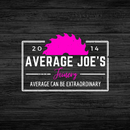Introduction: Game of Thrones Etched Glasses With Custom Wooden Stand
I'm a big Game Of Thrones fan and since I'm missing it being on our screens I thought I would scratch my Westeros itch by making these Etched glasses using the Stark, Targaryen & Lannister houses. I also made a wooden stand to display them.
I have a video showcasing the build here:
Materials Used:
- Goblet Style Glasses
- Walnut
- Maple
- MDF
- Vinyl
- Transfer Tape
- Aluminium Oxide Powder
- Wood Glue
- Spray Lacquer
- Screws
- Black Felt Baize
- Painters Tape
Tools Used:
- Vinyl Cutter
- Exacto Knife
- Tweezers
- Air Eraser
- Mini Compressor
- Table Saw
- Mitre Saw
- Micro Jig Match Fit Dado Stop
- Micro Jig Match Fit Clamps
- Drill & Driver
- Hole Saw
- Router & Flush Trim Bit
- Clamps
- Scissors
Step 1: Prepare the Glasses
This project starts with creating stencils with a vinyl cutter. Now I know not everyone has access to a vinyl cutter but you can cut simple design by hand too using an exacto knife. I chose the Stark, Targaryen & Lannister houses for stencils.
When the vinyl cutter had done its thing I had to weed out the design. That involves picking off the pieces you want to be etched on the glass. An exacto knife and tweezers are really useful for this job.
The stencil then gets covered with transfer paper which is just like a wide roll of masking tape really. Make sure to press down well and remove any bubbles.
The white backing to the vinyl can then be removed and the stencil applied to the glasses. With the stencil lined up and pressed on its just a case of removing the transfer tape leaving the vinyl in place.
Step 2: Etch the Glasses
To etch the glass I used a mini air eraser. Its like an airbrush that connects to an airbrush compressor. Instead of spraying paint, it sprays aluminium oxide powder. This is hard enough to etch the glass. but not too abrasive as to destroy the vinyl.
I'm sorry I haven't got a close up shot of the powder coming out of the air eraser. You have to hold it quite close to the glass and my hand was always in the way of the shot.
When you have an even frosted look all over the design the vinyl can be removed and the glass rinsed off with water.
Step 3: Create Base
I planned to route a circular recess for the glasses to sit in. I knew a jig would make this easier to do so I cut some MDF at the same time as the walnut to the exact same dimensions.
I then marked centres on the MDF for each glass. This would give me a point to drill with the hole saw. I needed to double up the thickness of MDF because of the size of flush trim router bit I have. I only wanted a 5mm deep recess but with one layer of 18mm MDF I couldn't achieve that so 2 layers were needed. They were just joined together with screws.
I could then drill the holes all the way through the MDF. That's the jig done.
The jig gets clamped along with the walnut piece. Make sure all the edges are lined up flush with each other. Then using a flush trim bit in the router I could removed the material inside the holes. The bearing rides along the edge of the hole to give a nice crisp edge.
Step 4: Create Legs
I wanted to use Maple for the legs to create a nice contrast. I cut a 45 degree angle on them at the mitre saw.
To create the rebates for the legs I used a jig. This jig works great. It clamps on to your table saw fence. You can then reference the centre piece (1) to the right hand side of your blade. Reference the back piece (2) to the left hand side of the blade and then you simple reference the thickness of the material you want to fit. In this case that's the legs. They are held flush with the back section (2) and then the front piece (3) is snugged up tight to the edge of the legs.
Now with the mitre gauge on the saw you first hold the walnut against the centre piece (1) and make a cut. Then hold the walnut against the front piece (3) and make a cut. Then you just need to remove the material in between those two cuts for a perfect fit.
I had some chip out so to deal with that I added a 45 degree chamfer around the bottom edge using the router. I also thought the legs were too bit so I cut them shorter.
The legs simply get glued into place after everything got sanded to 240 grit.
Step 5: Finish the Base
I covered the bottom of the legs with painters tape. This is to keep the spray lacquer of them. I'll be using a spray adhesive on them later and it adheres better to bare wood.
The bottom and top of the base got 3 coats of spray lacquer.
When dry, I removed the painters tape and cut some black felt baize oversized to fit on them. I sprayed the two pieces with spray adhesive and let then sit a little while to become tacky. Then I could simply apply them to the bottom of the legs. I made sure to press them on firmly. After about 20 minutes I used a pair of scissors to cut the felt flush to the maple legs.
Step 6: Done
That's it all done. I really hope you liked the project. There is a lot of different ideas you can take from this, etching different designs on different glass, a different style of base even. Let your creativity run wild.













